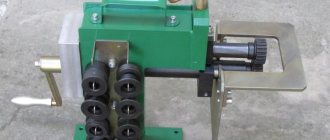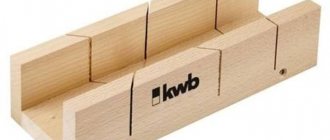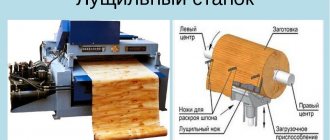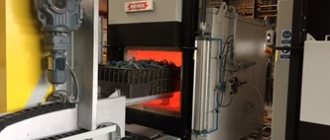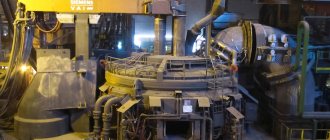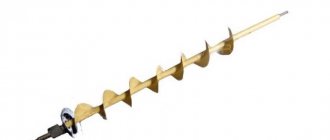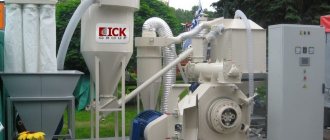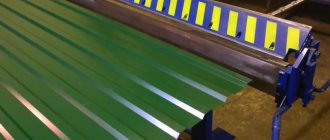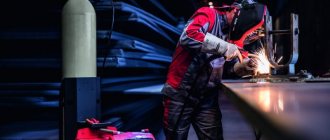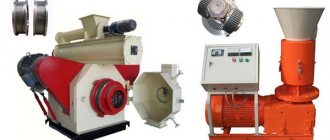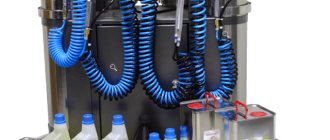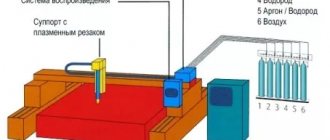Classification of lifting mechanisms by degree of rotation
The rotary crane freely rotates the load around a supporting axis. Such equipment includes tower and console cranes.
The part-turn crane provides rotation at an angle of up to 360 degrees. Often, these include cantilever stationary cranes, or cantilever cranes with a support on the wall.
A full-rotating crane can rotate a load 360 degrees or more from one extreme point to another along the axis of the support beam.
A fixed crane has no moving part, which ensures the rotation of the boom with a load relative to the central support. These cranes include overhead or gantry cranes located on guides.
Classification of lifting equipment by operating mode
According to international standards GOST 25546-82 and ISO 4301-1-86, permissible operating modes for cranes are regulated. There are operating modes of cranes from A1 to A8. They are determined by the ratio of work intensity to the weight of the load being lifted. The higher the level, the higher the requirements placed on the crane.
To operating mode A1
These include general purpose cranes that are not used in continuous operation. Typically, this group includes manually operated cranes used at pumping and compressor stations, in machine rooms of power plants, as well as loading and auxiliary cranes in mechanical shops, and repair cranes. Operating mode A1 also includes jib self-propelled (pneumatic tires, truck-mounted, crawler) cranes used for installation of industrial and power equipment (crane lifting capacity over 100 tons).
Operating mode A2
provides for more intense loads on the crane elements with significant interruptions in operation. This mode of operation includes loading cranes designed for installing workpieces on processing machines, driven auxiliary bridge cranes operating in mechanical shops, machine rooms of power plants, cantilever cranes intended for installation and repair work, self-propelled jib cranes (pneumatic wheeled, automobile, tracked) used in the installation of industrial buildings and structures (with a load capacity of 25 to 100 tons).
Operating mode A3
includes cranes designed for regular medium-intensity reloading operations. Typically these are overhead cranes involved in transport and installation work in mechanical shops, as well as tower construction cranes used for the construction of industrial buildings, structures and equipment (crane lifting capacity over 100 tons), jib self-propelled cranes intended for loading and installation and construction works (with a lifting capacity of up to 25 tons).
Operating mode A4
includes taps that are regularly used intensively intermittently. Such cranes include cantilever cranes used for reloading and auxiliary work, as well as construction tower cranes of house-building factories and other specialized construction organizations, for work in warehouses and landfills of reinforced concrete products factories (crane lifting capacity up to 100 tons).
To A5 mode
These include cranes designed for work under intense load conditions. Cranes in this mode of operation are involved in technological work in machine shops, lower timber warehouses, warehouses of finished products of building materials enterprises, metal sales warehouses (overhead cranes), warehouses for piece and bulk cargo (cable cranes).
Operating mode A6
covers cranes used in 24/7 heavy duty applications. Such cranes are used in mixed warehouses (cranes with double-rope grabs are used), warehouses of semi-finished products, rack warehouses of containerized cargo (overhead and rack stacker cranes), warehouses of industrial enterprises and ports, transport warehouse facilities. For transshipment of various cargoes, including containers at railway stations, industrial warehouses, and large round timber warehouses. Mode A6 also includes cantilever mobile cranes operating in foundries.
In A7 mode
cranes are operating, regularly intensively operated with short breaks. This group of cranes is not characterized by round-the-clock work with homogeneous loads. Conditions where A7 operating mode cranes are used include warehouses for bulk cargo and scrap metal (grab and magnetic cranes are used), workshops of metallurgical enterprises (hardening, forging and pin cranes), hydraulic construction sites (tower construction cranes are used).
Operating mode A8
includes cranes designed for the most difficult operating conditions. Such conditions include either round-the-clock, year-round use of the crane (cranes with grabs in warehouses for bulk cargo and scrap metal, or work in workshops and warehouses of metallurgical enterprises, large metal depots (traverse, muldomagnetic, muldo-grab, muldo-loading, for stripping ingots, pile driver, cupola charge, well, magnetic cranes), bulk cargo warehouses.
Cranes, with increasing operating conditions, require higher standards for the design process of the structure and the further production of lifting equipment, in terms of the reliability and durability of structural elements.
On a note!
When choosing the optimal lifting equipment, it is important to take into account all the conditions and technical parameters: the maximum weight of cargo that needs to be lifted, the dimensions of the room or the area for lifting operations. When choosing, consider the size of the room or production site. These features will determine the load capacity, lifting height, and equipment span lengths. Also, under these conditions, a set of equipment and additional options for the crane are determined. These parameters will allow you to optimally place this or that lifting equipment. Establish its continuous and efficient operation according to the requirements of your enterprise.
Scope of application of lifting machines and mechanisms
Lifting mechanisms of various designs are in demand in all industries, at construction sites, in warehouse logistics, at transport enterprises when servicing equipment at energy facilities. The use of lifting equipment is carried out where it is necessary to perform installation and dismantling, lifting, securing and moving loads, repairs, loading and unloading. The selection of equipment from a wide range of lifting machines (HLMs) is made based on the technical parameters of the devices and their operating conditions.
Lifting devices from professionals
Order the manufacture of a crane from our company. Crane has been designing, manufacturing, installing and servicing lifting devices for various applications for more than 10 years. We produce overhead, cantilever, gantry cranes, trestles, and mobile devices. On an individual order, our specialists will develop a crane with individual characteristics for your business, we carry out orders for non-standard designs.
Contact us in any convenient way
, request a call back or visit our office in Moscow, we will answer any questions you may have. Our managers will always help you choose the right crane modification.
Types of lifting machines
Jacks
The simplest and most common lifting mechanisms with manual or machine drive, used to lift loads to a small height and hold them in a raised position while performing work:
- Hydraulic. In most cases, the operating principle is based on hydraulics, which gives the jacks a significant lifting capacity. Hydraulic devices provide smooth lifting, easy movement and reliable fixation of loads, have a high lifting capacity - 5-20 tons (some models - up to 200 tons), lifting height - up to 0.4 m;
- Rack and pinion. The rack and pinion transmission and design features of such jacks make it possible to lift loads almost from the ground or floor. The load capacity of the devices is no more than 6 tons, the lifting height is up to 0.6 m. They are actively used when performing repair and installation work, including the repair of railway tracks;
- Screw. The principle of operation is “screw-nut”, lifting height is up to 0.4 m, load capacity is up to 50 tons. They are used as a stand and to hold units when performing repairs, to hold building structures.
Rack and screw models have a mechanical drive designed to operate over a wide temperature range. The devices do not require expensive maintenance. The fundamental difference between jacks and other types of lifting equipment is that they are located under the load. This eliminates the need for additional use of ropes, cables, chains, and other rigging equipment and fasteners.
Mounting blocks
They can act as part of complex systems (telphers, hoists) or as autonomous lifting mechanisms. The structure of this lifting equipment is as follows - the basis is a wheel with a pulley and a cable. A chain hoist is created from several cables and pulleys - a system with significant lifting capacity. The pulley operates as a lever mechanism. The cables used in the mounting block and pulleys can be hemp, synthetic or metal. When performing small lifting operations, it is preferable to use cables made of mineral and synthetic fibers.
Winch lifting mechanisms
Winches are universal lifting equipment that is widely used in the construction and industrial sectors, and in everyday life. Winches can be manual or electric and are indispensable when lifting or pulling loads. Structurally, manual equipment is divided into the following types:
- Drums. The most common type of device that ensures the movement of goods using a cable that is wound on a drum. The equipment is designed for use in simple work areas;
- Lever. The movement of the device “put on” the drum is ensured using a lever-handle. The popularity of these mechanisms is explained by their compactness, relatively low weight and the absence of restrictions on the length of the sling or cable;
- Worm-shaped. They are analogous to drums. The role of the drum is played by the “Archimedes screw”.
The pulling force of lever winches ranges from 100 kg to 8 tons. The equipment is suitable for domestic and industrial use.
- Electric winches (telphers) are powerful equipment that can significantly speed up cargo lifting operations. Both large and compact models are available;/li>
- Automotive winches are specialized tools designed to work with vehicles. They produce standard and ATV models.
Manual and electric hoists
This group includes productive, highly efficient, convenient lifting devices. Hoists are used independently or in combination with more complex mechanisms - crane installations, crane beams, etc. According to the type of drive, hoists are divided into:
- Manual. Represented by gear, drum, worm devices. Gear devices are designed to lift loads upward (the person controlling their operation is located below, at the place where the load is secured). Optimal for use in rooms with significant ceiling heights. Lever hoists can be used in confined spaces (pits, wells, etc.). Gear options provide rotation through a gearbox, which is transmitted to the drum and cable, winding around and pulling the load along with it. The operator is located on top, at the place where the hoist is attached. All manual mechanisms can be used according to the principle of a traction winch;
- Electrical. Designed to provide high productivity and intensity of work, allow you to move loads at high speed. Electric hoists (telphers) are presented in stationary and mobile models. The equipment is designed both for autonomous use and for use as part of construction and overhead cranes. Hoists are represented by rope and chain models.
Crane installations
There are many types of cranes. There are massive, highly specialized models designed for use exclusively at large industrial enterprises and large-scale construction sites. You can also purchase equipment that is ideal for repair and installation work, for automotive services and small construction projects. You can select the following types of taps:
- Flyovers. They are represented by gantry, overhead, cable cranes and are designed for use in reinforced concrete warehouses, landfills, large assembly sites, and industrial construction sites;
- Console. They are divided into wall-mounted, column-mounted and mobile. Equipment of this type is used at industrial enterprises, construction sites, for servicing utilities, transporting goods, performing local repairs, moving products in hangars, storage facilities, etc.;
- Hydraulic. They are also called “garage” - an ideal choice for auto repair shops;
- Portal. Ideal for use in warehouses and production facilities;
- TUR towers. Designed for placing tools and building materials in the work area. They are used in the construction of civil and industrial facilities, as well as during repairs, finishing, reconstruction, and installation.
Crane units can be mounted on various platforms and are easily adapted to vehicles of different models. Designed for moving cargo in hard-to-reach places and in cramped conditions.
Storage equipment
To perform operations for moving heavy, bulky cargo, warehouse equipment and components of the following types can additionally be used:
- freight lifts,
- crane beams,
- rope, textile, chain slings,
- other rigging and components for slings,
- trolleys of various modifications,
- stackers, etc.
Modern lifting equipment and components are of high quality, durability and reliability and do not require complex maintenance. First of all, hydraulic lifting machines are designed for lifting loads, but there are many models of equipment that additionally provide the ability to move, store, and stack products. Our plant for the production of lifting equipment "Startcom" produces devices that can be used independently or as part of more complex lifting mechanisms.
